Osaka Temples: 15 Sacred Buddhist Sites to Explore

Osaka has several temples that serve as sacred sites. We introduce 15 famous temples to explore in Osaka, from historical locations in the city to mountain temples that offer breathtaking views and are perfect for day trips and hikes.
Osaka is home to Shitennoji, the very first Buddhist temple ever built in Japan, and many other famous locations of Buddhist worship. To learn more about the differences between Buddhist temples and Shinto shrines, read our article.
We introduce 15 temples in Osaka that deserve to be visited for their impressive history, unique architectural features, and seasonal highlights.
15 Famous Temples in Osaka
Temples within Osaka City
1. Shitennoji Temple
2. Shinganji Temple
3. Hoshoji Temple
4. Taiyuji Temple
5. Isshinji Temple
Temples in the Outskirts of Osaka City
6. Katsuoji Temple
7. Shipporyuji Temple
8. Fujiidera Temple
9. Sojiji Temple
10. Mizumadera Temple
11. Mount Myoken
12. Kuanji Temple
13. Domyoji Temple
14. Ryuanji Temple
15. Sefukuji Temple
Temples within Osaka City
In the bustling Osaka city area, there are several well-known temples, including the birthplace of the Pure Land sect of Buddhism and temples related to the Sengoku (Warring States) period.
1. Shitennoji Temple

Shitennoji Temple was established by Japan's Prince Shotoku (574 - 622) and is the country's first official temple. It is also one of the most well-known temples in the entire Osaka Prefecture.
The stone torii gate built in 1294 serves as a boundary for the sacred area, bearing witness to the fact that Shinto and Buddhism were at that time perceived as one unified spiritual world and not separated. The relief inscription on the torii gate reads "Shakyamuni Buddha at the center of the Eastern Gate, where the Dharma Wheel turns and leads to the Pure Land." This signifies that the gate symbolizes the place where Shakyamuni Buddha explained the Buddhist teachings, serving as the entrance to the Pure Land.
Long ago, during the spring and autumn equinoxes, the setting sun would perfectly align with the center of the torii gate on the west side of the temple facing the sea. This led to the belief that it was a place for observing the sun and practicing asceticism. Additionally, it is considered the birthplace of the Pure Land sect of Buddhism, which became one of Japan's Buddhist sacred sites.
Shitennoji Temple
Address: Osaka City, Tennoji ward, Shitennoji 1-11-18
Official website: https://www.shitennoji.or.jp/ (Japanese)
2. Shinganji Temple
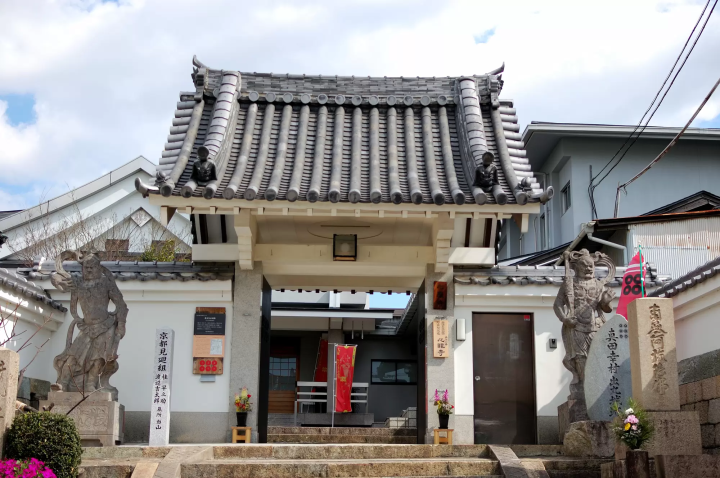
Picture of courtesy Pixta
Shinganji Temple was established during the era of Toyotomi Hideyoshi (1537 - 1598) and served as the base of famous samurai warrior Sanada Yukimura during the Siege of Osaka. It was damaged after the Winter Siege of Osaka but was reconstructed in 1622 with the assistance of the Sanada family's ancestor, Umino, and dedicated to Sanada Nobushige and his son Daisuke.
Being under the jurisdiction of the Tokugawa shogunate, it was not possible to erect tombstones. It wasn't until 2014, the 400th anniversary of Sanada Nobushige's death, that a monument was finally erected.
Shinganji Temple
Address: Osaka City, Tennoji, Ebashicho 2-22
Official website: https://osaka-info.jp/en/spot/shinganji/
3. Hoshoji Temple
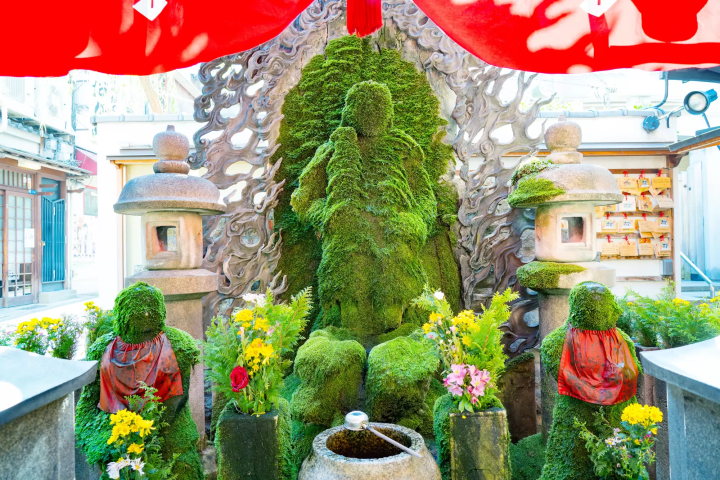
Picture of courtesy Pixta
Hoshoji Temple, located in the bustling Namba area of Osaka, belongs to the Jodo Shinshu Buddhist sect and is formally named Jodo Shinshu Tenryuzan Hoshoji. Unlike other temples in Japan that have specific opening and closing hours, Hoshoji Temple is open for worship 24 hours a day.
One of the most well-known features within the temple grounds is the Fudo Myoo covered in green moss. Legend has it that making wishes while pouring water on Fudo Myoo will lead to the fulfillment of those desires. Over time, the collective wishes of people turned into moss, creating this particular unique green Fudo Myoo. Apart from being an essential place of worship for locals, the surrounding area of Hoshoji Temple is home to many shops and attracts numerous tourists.
Hoshoji Temple
Address: Osaka City, Chuo ward, Namba 1-2-16
Official website:https://houzenji.jp/ (Japanese)
4. Taiyuji Temple
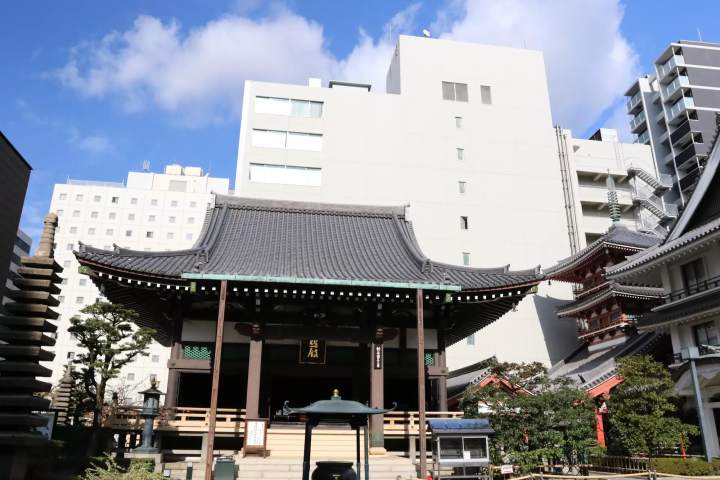
Picture of courtesy Pixta
Taiyuji Temple, located near JR Osaka Station and nestled in the bustling streets of Umeda, was founded in 821 A.D. by the Buddhist master Kobo Daishi. Emperor Saga even donated a thousand-armed Kannon statue as the main deity for worship.
The temple experienced a prosperous period and expanded to have seven large halls. However, it suffered repeated destruction during wartime fires, leaving only the rebuilt structure we see today after World War II. Nevertheless, the main deity, the statue of a thousand-armed Kannon, managed to survive the calamities and remains enshrined in the temple to this day.
Within the temple grounds, you can find the tomb of Lady Yodo, the wife of General Toyotomi Hideyoshi, who took her own life during the Summer Siege of Osaka. The temple also played a role in the origin of modern Japanese political parties, leaving its mark across different eras as a significant historical site.
Taiyuji Temple
Address: Osaka City, Kita ward, 3-7 Taiyuji-cho 3-7
Official Website: https://taiyuji.net/index.html (Japanese)
5. Isshinji Temple
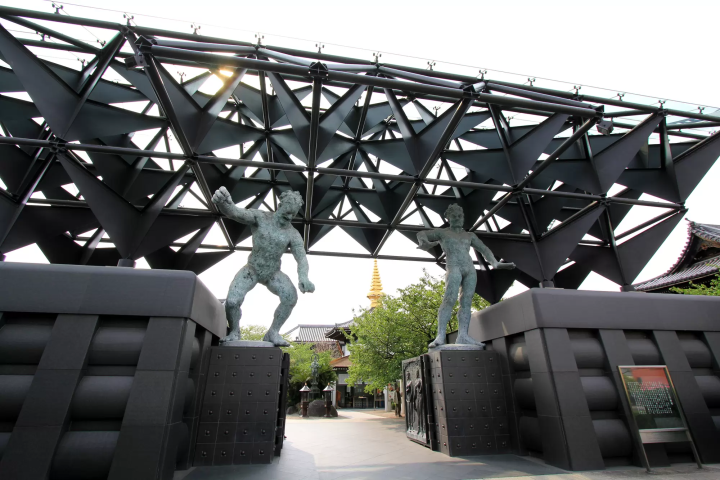
Picture of courtesy Pixta
Isshinji Temple is located in Tennoji Park in Osaka City. Founded in the late 12th century, the temple received patronage from Tokugawa Ieyasu (1543 - 1616) during the Edo period (1603 - 1868).
In the late Edo period, it accepted the cremated remains of commoners regardless of their religious affiliation. Starting from the 20th year of the Meiji era (1868-1912), the collected remains are used to create a statue of Amida Buddha once a decade, earning the temple the nickname "Temple of Bone Buddhas."
The temple's main gate, completed in 1997, was personally crafted by the head priest, Kyo Gyoko Takaguchi, who was originally an architect. With a combination of Western-style architecture, the gate exudes a powerful presence, setting it apart from ordinary temples.
Isshinji Temple
Address: Osaka City, Tennoji ward, Osaka 2-8-69
Official Website: https://www.isshinji.or.jp/ (Japanese)
Temples in the Outskirts of Osaka City
Osaka Prefecture is home to many temples surrounded by lush greenery, making it an ideal destination for a peaceful and Zen-like getaway.
6. Katsuoji Temple
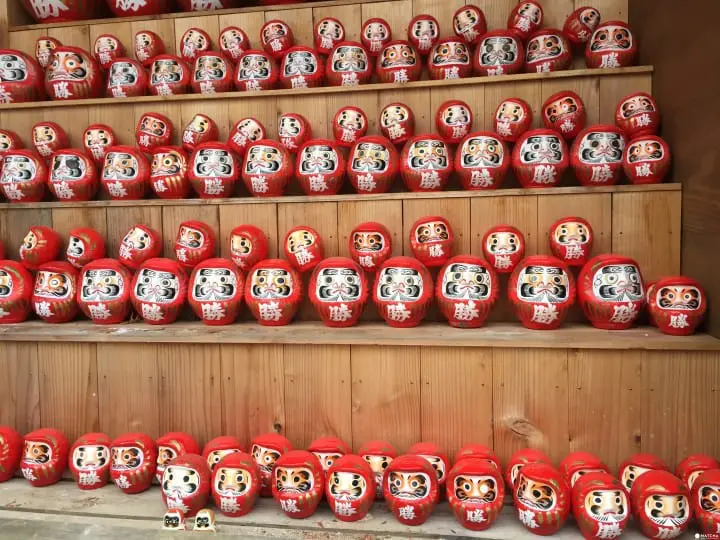
Located in Minoh City, Osaka Prefecture, Katsuoji Temple was founded in 727 and is renowned for its good fortune. The temple is known for its Daruma dolls, believed to bring luck, which can be found throughout the area.
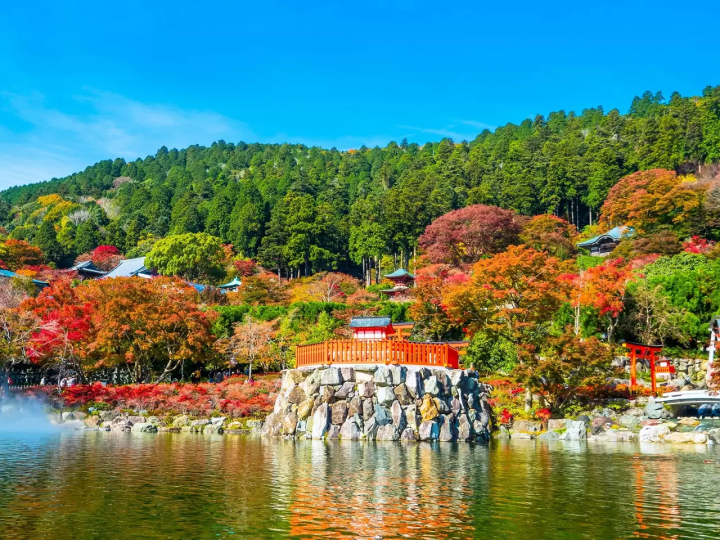
Picture courtesy of PR Times
With an expansive 80,000 square meters, the temple grounds feature diverse flora such as cherry blossoms and hydrangeas that bloom throughout the seasons, attracting many visitors. The vibrant autumn foliage, especially the maple trees, creates a magnificent display, making it an ideal destination to appreciate nature and get a hold of good luck. The temple frequently holds evening light-ups for visitors to enjoy seasonal highlights such as cherry blossoms, greenery, and fall foliage.
Katsuoji Temple
Address: Katsuoji, Minoh City, Osaka Prefecture
Official Website: https://katsuo-ji-temple.or.jp/ (Japanese)
7. Shipporyuji Temple
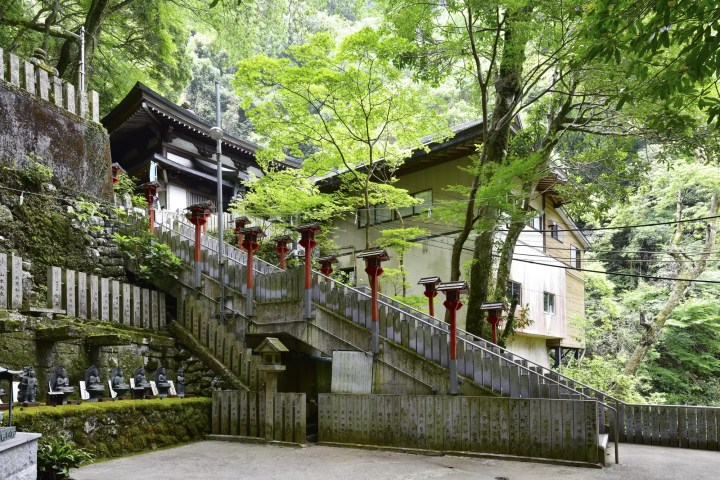
Picture of courtesy Pixta
Shipporyuji Temple known as the "oldest sacred place in Japan," is located on Mount Inukai, one of the ascetic sites established by En no Gyoja (634 - 706), the founder of Japanese Shugendo asceticism.
Mount Inukai features 48 waterfalls, rocks, and shrines, and is considered a large ascetic training ground. Among them, the most spiritually potent location is believed to be the Shipporyuji Temple.
The name of the temple originates from the fact that the Buddhist monk Kukai (Kobo Daishi) offered treasures such as gold and silver at the seven representative waterfalls within Mount Inukai, naming it Shipporyuji, the "Treasure Temple". It is believed that by visiting Shipporyuji Temple, one can receive blessings from Fudo Myoo and the Seven Lucky Gods—a total of eight divine beings!
Shipporyuji Temple
Address: Osaka, Izumisano City, Ogi 8
Official Website: https://inunakisan.jp/en/
8. Fujiidera Temple
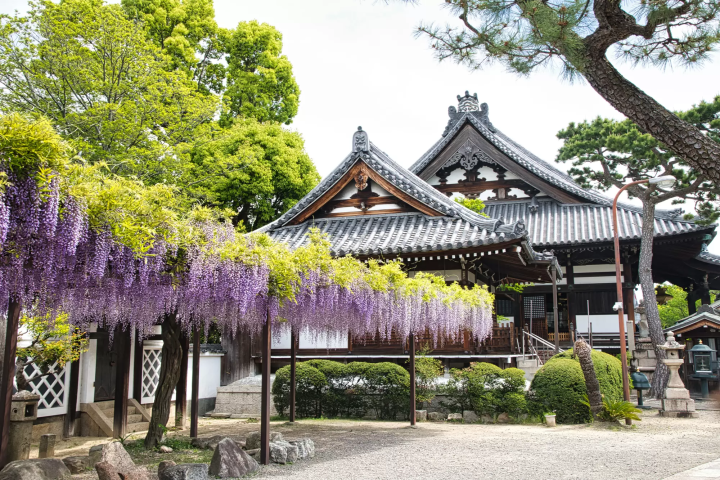
Picture of courtesy Pixta
Fujiidera Temple in Fujiidera City, Osaka, was founded in the 7th century and houses the oldest eleven-faced Kannon statue in Japan. This statue dates back to the Nara period (710 - 784), making it the only such Buddha image in Osaka Prefecture and carrying significant historical importance.
The four-sided gate within the temple grounds features characteristics of Momoyama culture (1568 - 1603) and is designated as a cultural asset. During spring, the blooming wisteria transforms Fujiidera Temple into a scenic spot for these twisting vines with purple flowers.
Fujiidera Temple
Address: Osaka Prefecture, Fujiidera City, Fujidera 1-16-21
Official Website: http://www.fujiidera-temple.or.jp/ (Japanese)
9. Sojiji Temple
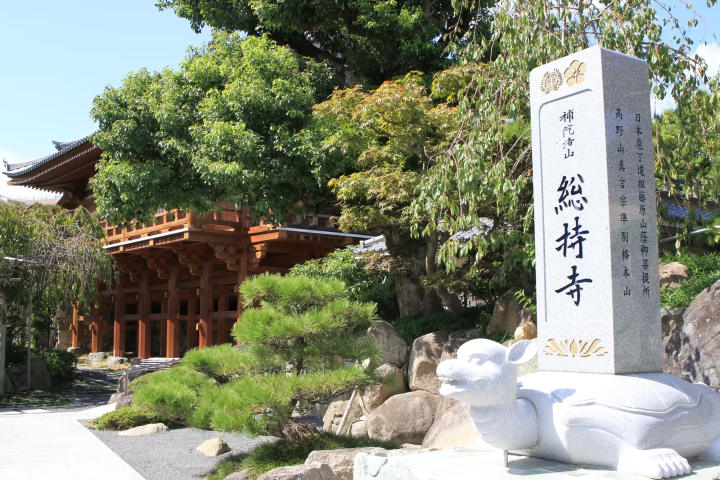
Picture of courtesy Pixta
Sojiji Temple was built in the Heian period (794 - 1185) and is known for the legend of Kannon, the goddess of mercy. The main object of worship is a statue of Senju Kannon depicted riding on the back of a turtle, which is a rare sight.
Additionally, this temple is believed to be the place where the founder Fujiwara no Yamakage established the culinary methods of the shojin ryori, Japanese Buddhist cuisine. This has made it a popular sightseeing location for chefs.
Sojiji Temple
Address: Osaka Prefecture, Ibaraki City, Soji-ji 1-6-1
Official website: http://www.sojiji.or.jp/ (Japanese)
10. Mizumadera Temple

Picture of courtesy Pixta
Mizumadera Temple is located in Kaizuka City, Osaka Prefecture, and is dedicated to the Holy Kannon Bodhisattva, affectionately known by locals as the "Mizuma Kannon."
Established in 744, the temple has a long history and has undergone reconstruction in 1811 after facing the challenges of wars and fires. The main hall, surrounded by lush greenery, provides a serene setting, making it an ideal destination for a peaceful day trip away from the city.
Mizumadera Temple
Address: Osaka Prefecture, Kaizuka City, Mizuma 638
Official website: http://www.mizumadera.or.jp/ (Japanese)
11. Mount Myoken
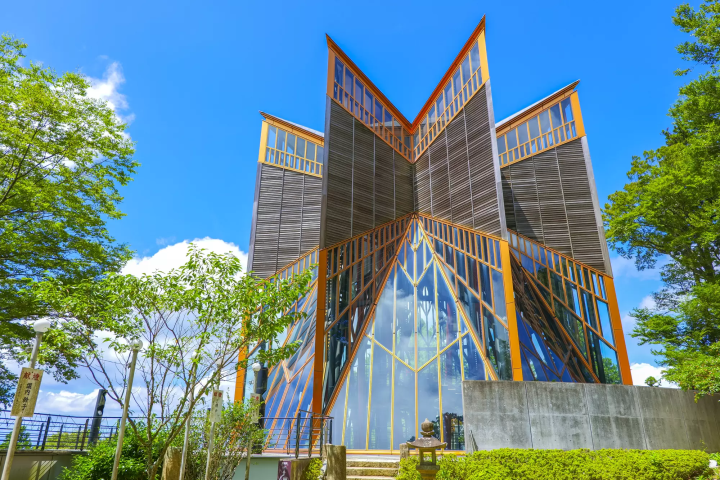
Picture of courtesy Pixta
Revered as the "Peak of Osaka," Mount Myoken, with its summit standing at 660 meters, is home to a Nichiren Buddhist temple called Nose Myokenzan. The temple enshrines the Myoken Bodhisattva and is considered a sacred site for the worship of the northern star in Japanese folklore.
During the Edo period, it gained fame through miraculous legends, some of which became subjects in traditional storytelling (rakugo), attracting pilgrims from across the country. Today, many visitors trek from the base to the summit to pay their respects. The unique "Seirin" building within the precincts symbolizes the North Star and adds a distinct touch to the site.
Mount Myoken
Address: Osaka prefecture, Toyono district, Nose-cho, Noma-naka 661
Official Website: http://www.myoken.org/ (Japanese)
12. Kuanji Temple
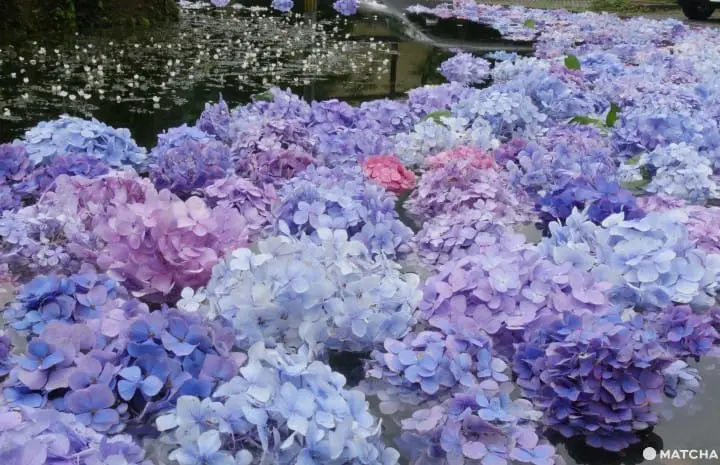
Kuanji Temple, founded in the Nara period (710-784), features an elegant eaves design on its tower gate, acclaimed as the most elegant tower gate and designated as an important cultural property in Japan.
The temple grounds are adorned with various plants year-round, including peonies in spring, hydrangeas in summer, maple leaves in autumn, and plum blossoms in winter. It's one of the famous flower temples in the Kansai region. Particularly in summer, when hydrangeas are in full bloom, the pond in front of the main hall is covered with vibrant hydrangea flowers, making it one of the top hydrangea viewing spots in Osaka.
Kuanji Temple
Address: Osaka Prefecture, Ikeda City, Fushio-cho 697
Official website: https://kyuanji.jp/ (Japanese)
13. Domyoji Temple
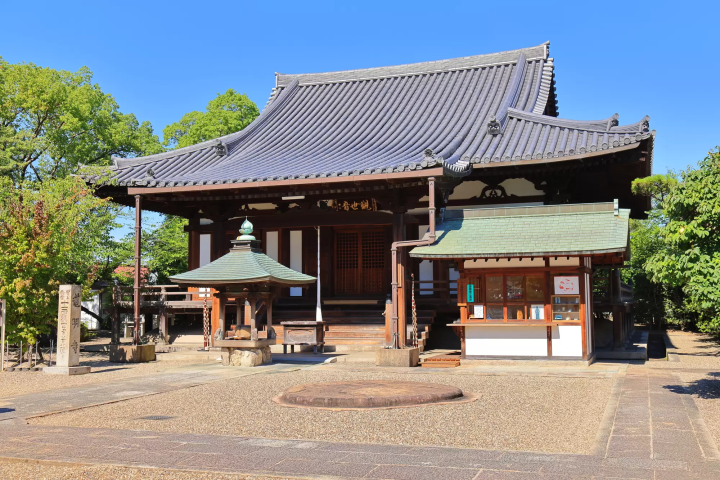
Picture of courtesy Pixta
Domyoji Temple, located in Fujiidera City, was established in the mid-7th century. Sugawara no Michizane (845-903), a scholar and politician who came to be worshipped as the guardian deity of learning, is said to have visited this place. The one-meter-tall wooden eleven-headed Kannon Bodhisattva statue worshipped here is believed to date back to Lord Sugawara's times.
Another interesting fact is that Domyoji Temple is the birthplace of the namesake Kansai-style sakuramochi confection, a popular treat during the cherry blossom season.
Domyoji Temple
Address: Osaka Prefecture, Fujiidera City, Domyoji 1-14-31
Official Website: http://www.domyoji.jp/index.html (Japanese)
14. Ryuanji Temple
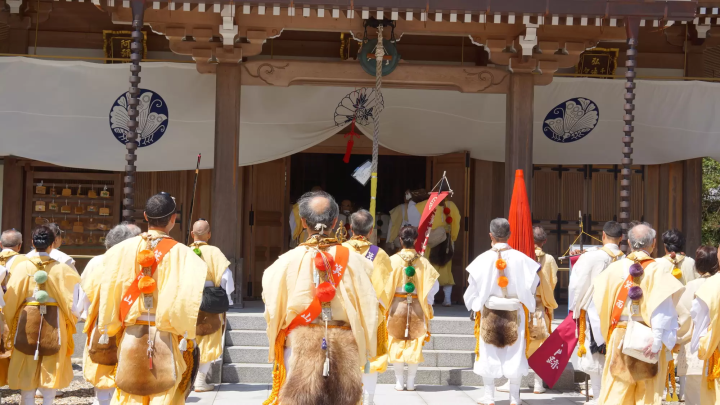
Picture of courtesy Pixta
Ryuanji Temple is located in Minoh Park in Osaka City and is a temple of the Honzan Shugendo sect. It houses one of Japan's Four Benzaiten and is said to be the birthplace of the Japanese lottery "Fukusen." Every year in April, July, and November, Yamabushi from the Kansai region gather at Ryuanji Temple for ceremonies to pray for peace, creating a spectacular scene.
Ryuanji Temple
Address: Osaka Prefecture, Minoh City, Minoh Koen 2-23
Official website: https://www.ryuanji.org/ (Japanese)
15. Sefukuji Temple
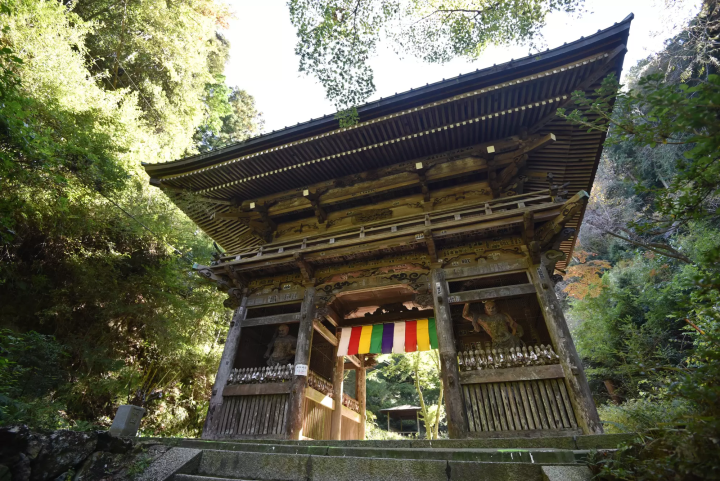
Picture of courtesy Pixta
Sefukuji Temple is located on Mount Makio in the southern part of Osaka Prefecture and is one of the challenging temples among the Saigoku Kannon Pilgrimage.
However, due to possessing the only Horse-Headed Kannon with visible foot soles in Japan, along with a unique 5-meter Katatagae Daikannon statue (*1), and the panoramic view of Osaka Bay for praying for safe navigation, it continues to attract many worshipers, despite requiring climbing a steep path for 30 to 40 minutes.
*1... Katatagae Daikannon: A type of statue of the Kannon Boddhisatva that is thought to help worshippers bring their lives in a good direction.
Sefukuji Temple
Address: Osaka Prefecture, Izumi City, Makioneyama-cho 136
Official Website: https://saikoku33.gr.jp/place/4 (Japanese)
Explore Osaka's History-Rich Temples
Osaka is not just about vibrant things like food and shopping. It also has profoundly serene Buddhist sanctuaries. Next time you visit Osaka, consider scheduling several visits to some temples. It will provide an opportunity to deepen your understanding of Osaka on a different level.
Read also
Main image: Katsuoji Temple in spring. Photo by Pixta
I used to live in Japan and managed to conquer 78 out of the 100 famous castles and 12 existing castle towers in 8 years. As a history enthusiast, I also have a passion for baseball and Japanese dramas, which have driven me to visit all 47 prefectures. I hope to convey not only the scenery of Japan but also more of its culture and way of life.




































![[JR KYUSHU HOTEL Blossom Oita] A hotel directly connected to Oita Station - A comprehensive guide to access!](https://resources.matcha-jp.com/resize/720x2000/2025/10/23-247814.webp)
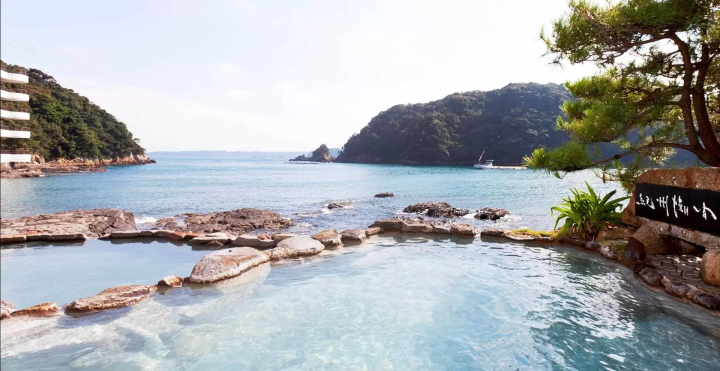
![Deep dive into Japanese brands! A tour of famous leather shoe stores with GENSEI & Nin [Harta Edition]](https://resources.matcha-jp.com/resize/720x2000/2025/12/18-253277.webp)
